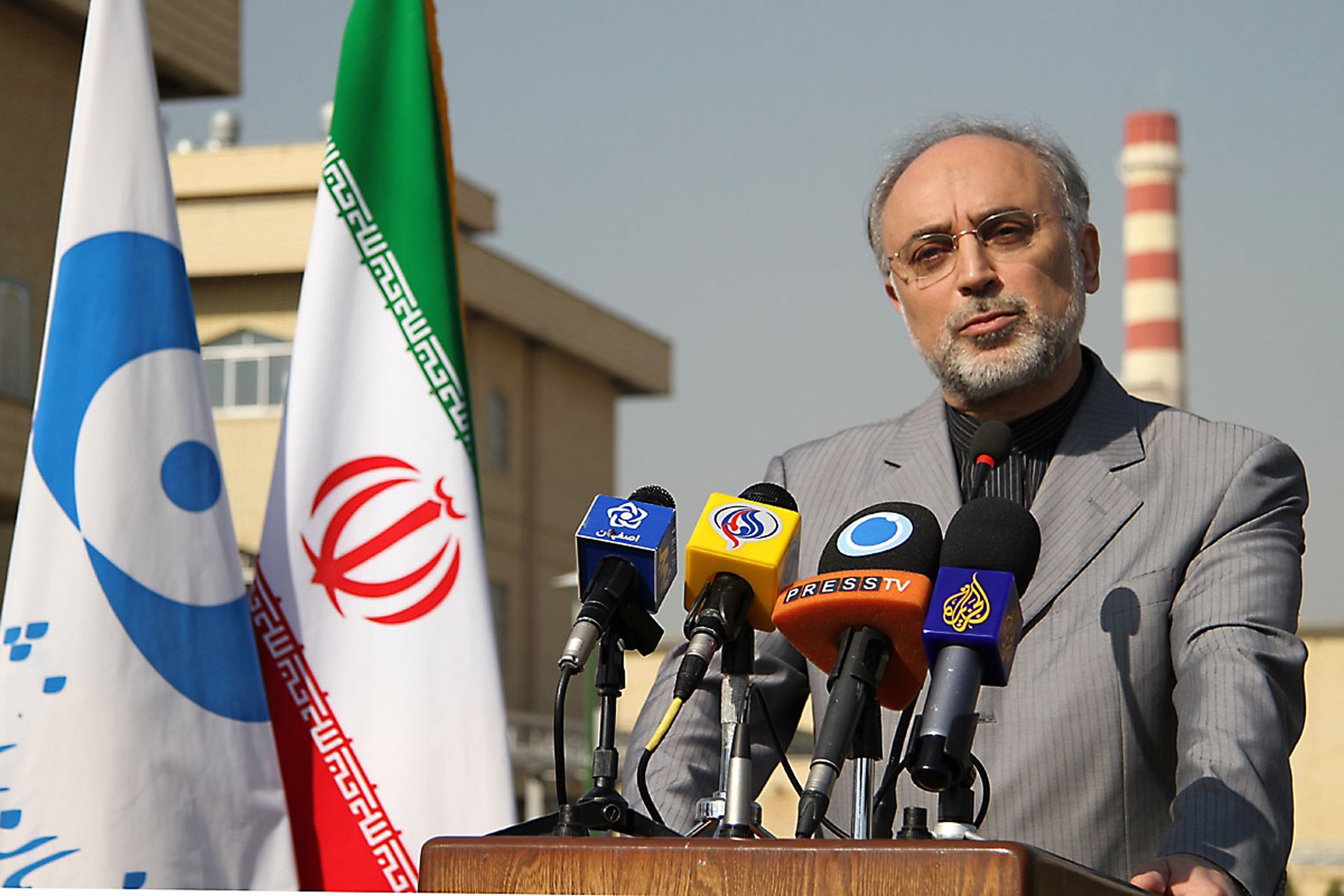Iran ramps up uranium production, throwing ‘brick on the accelerator’

[ad_1]
Iran’s atomic chief Ali Akbar Salehi speaks during a press conference outside a fuel manufacturing plant in the central province of Isfahan.
Hmidreza Nikomaram | AFP | Getty Images
Iran is ramping up its uranium output, a provocative step that threatens to further inflame simmering tensions with the United States and deepen regional conflict following a series of dangerous escalations in the Middle East.
Iranian production of low-enriched uranium has recently increased fourfold, putting the nation on a path to exceed limits on nuclear materials set out in a 2015 agreement with world powers, a spokesperson for Iran’s atomic energy agency told Iranian news outlets on Monday.
The supplies in question are not enriched to a level suitable for weapons development. Still, the increased output threatens to further erode the Iran nuclear deal and destabilize a region that provides much of the world’s energy supply.
The comparison here is they were already going 55 miles per hour and heading towards a busted bridge. And so what the [Atomic Energy Organization of Iran] is saying is that they threw a brick on the accelerator.
Richard Nephew
former State Department principal deputy coordinator for sanctions policy
The stockpiling also raises concerns about the proliferation of nuclear materials, said Helima Croft, global head of commodity strategy at RBC Capital Markets.
“We are woefully underappreciating the seriousness of this crisis,” she said.
President Donald Trump announced he would pull the U.S. out of the nuclear accord and restore wide-ranging economic sanctions against Iran just over a year ago. The other parties to the deal — China, Russia and the European Union — condemned the U.S. withdrawal and have attempted to preserve the agreement, which put limits on Iran’s nuclear activity in exchange for sanctions relief.
Iran continued to abide by the terms of the deal until Washington sharply escalated tensions last month.
In April, the Trump administration designated the Iranian Revolutionary Guard Corps a terrorist organization and announced it would tighten sanctions in a bid to drive Iran’s oil exports to zero. Shortly after the new U.S. sanctions policy took effect this month, Iran said it would stop complying with key parts of the nuclear deal.
Last week, Iran began delivering on that threat by continuing to enrich uranium, even though U.S. sanctions waivers allowing Iran to ship excess uranium to Russia and heavy water to Oman expired. Without the permissions to send those materials out of the country, Iran would have eventually overshot the amount of uranium and heavy water it is allowed to stockpile under the nuclear deal — unless it completely stopped enrichment activity.
But the comments from Atomic Energy Organization of Iran spokesperson Behrouz Kamalvandi on Monday suggest Iran is not just on pace to exceed the uranium cap, but is now racing towards it.
“The comparison here is they were already going 55 miles per hour and heading towards a busted bridge. And so what the AEOI is saying is that they threw a brick on the accelerator,” said Richard Nephew, a lead sanctions expert for the State Department team that negotiated the Iran nuclear deal under President Barack Obama.
“They would have eventually breached the threshold. What they’re saying today is they are deliberately and intentionally trying to breach the threshold faster,” said Nephew, now a senior research scholar at Columbia University’s Center on Global Energy Policy.
For the moment, Iran is not exceeding the enrichment cap of 3.67% uranium, an amount consistent with civilian nuclear power development. However, Iran has threatened to blow past that level if Europe and the remaining parties to the nuclear accord do not take measures to bolster the Iranian economy.
Though uranium must be enriched to 90% to make weapons, much of the work to reach that tipping point has already been done once uranium is enriched within a range of 3% to 4%.
The latest escalation follows a troubling series of events in recent weeks, including the expedited deployment of U.S. military assets to the Persian Gulf, an attack on four ships off the coast of the United Arab Emirates, and a drone strike by Iran-aligned Houthi rebels on Saudi oil infrastructure.
On Sunday, a rocket struck the heavily fortified Green Zone in Baghdad, the seat of Iraqi power and the international community. The same day, Trump tweeted that if Iran wants a fight, it would be “the official end of Iran.”
“The market just believes it’s like a perpetual game of brinkmanship and we never hit the tripwire,” said RBC’s Croft. “The question is can we keep playing chicken without having head-on collision?”
— CNBC’s Natasha Turak contributed to this story.
Source link







